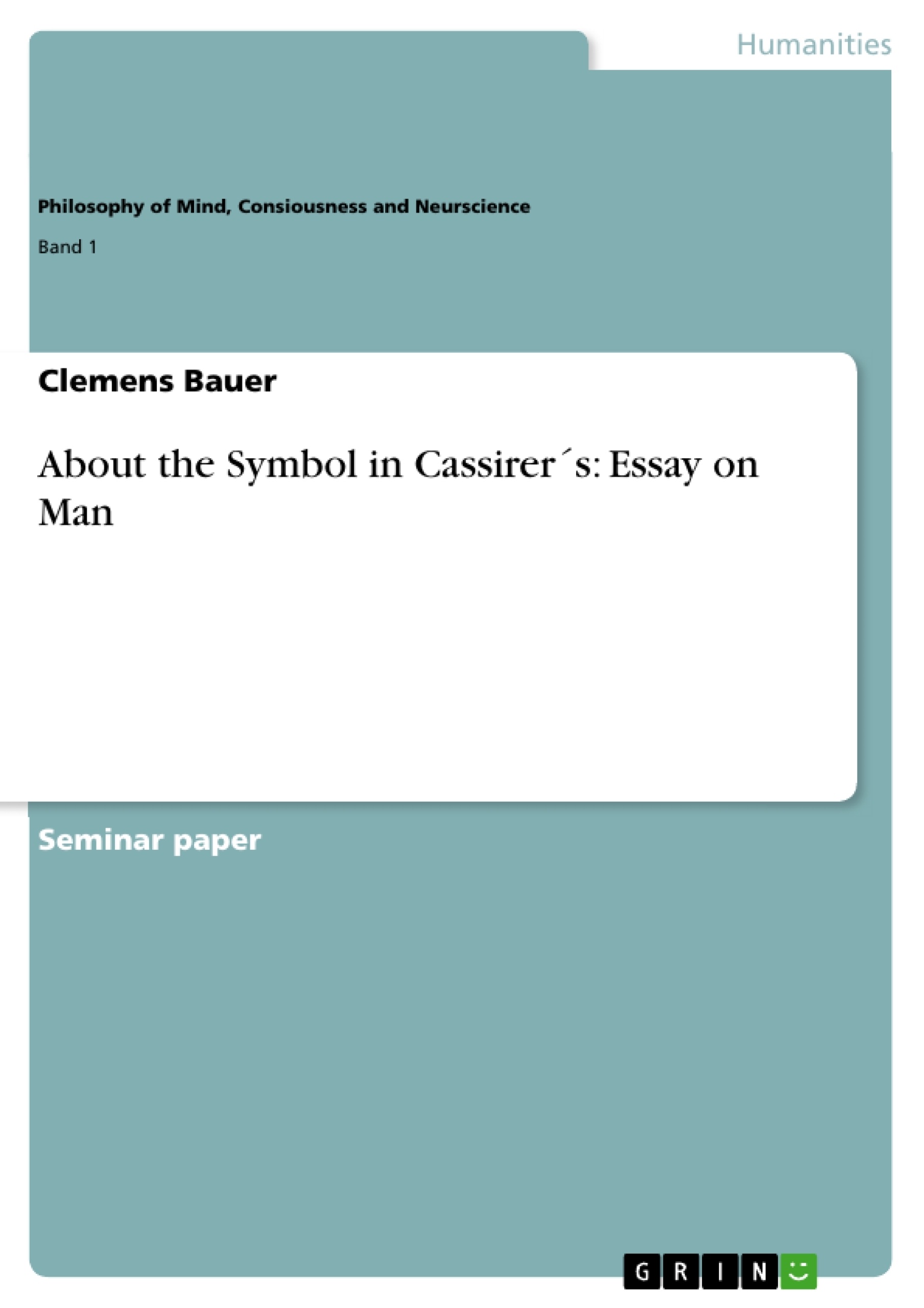Seeing shadows like the prisoners in the cave of Plato’s simile1, that’s what life of man would be like if he had not the symbol. Without symbols, mans life would be confined within the limits of his biological needs and his practical interests, thus not differentiating himself from other species2. In his “Essay on Man”, Ernst Cassirer examines man’s efforts to understand himself and to deal with the problems of his universe through a creation and use of symbols.
He analyzes the major symbolic forms of human enterprise: Language, Myth, Art, Religion, History, and Science. He discusses these subjects with the help of great thinkers of all times, making annotations on what, in each moment, these persons thought. He explains the point of view of Philosophers, Biologists, Naturalists, Physicists etc, and interprets them in a very unique way, to make the reader understand his point. He goes from Heraclitus to Kierkegaard and Einstein. This essay is a good synthesis of the ability of man to resolve human problems by the simple use of his mind through symbols.3
I have chosen three chapters that caught my attention. I will synthesize what for me is a symbol by looking into chapter II, “A clue to the nature of man: the Symbol” and chapter III, “From animal reactions to human responses”.
[...]
1 Cassirer, Essay on Man. P 41
2 idem. P. 41
3 Cassirer, Essay on Man, back review.
Table of Contents
- Introduction
- A clue to the nature of man: The symbol and from animal reactions to human responses
- Science
- Conclusion
- Literature
Objectives and Key Themes
This essay explores the significance of symbols in shaping human life and understanding, drawing upon Ernst Cassirer's work, "Essay on Man." The essay focuses on the defining characteristics of human existence, particularly the evolution of symbolic thought and its impact on human culture and perception of reality. It delves into Cassirer's arguments regarding the symbolic nature of man, analyzing key concepts such as the symbolic system and its influence on human reactions and responses. The essay further explores the transition from animal reactions to human responses and examines the role of symbols in shaping our understanding of the world.
- The Symbol as a Defining Characteristic of Human Existence
- The Symbolic System and its Influence on Human Reactions and Responses
- The Transition from Animal Reactions to Human Responses
- The Role of Symbols in Shaping Our Understanding of the World
- The Evolution of Symbolic Thought Through Human History
Chapter Summaries
The second chapter, titled "A clue to the nature of man: The symbol and from animal reactions to human responses," explores the unique nature of human thought, which sets us apart from other species. Cassirer argues that man's symbolic system, which allows for delayed and complex responses, is a defining feature of human existence. This symbolic system enables humans to perceive and interact with the world in a new dimension of reality, beyond mere physical needs and reactions. Through the use of symbols, humans create a world of imagination, subjective constructs, and self-reflection, influencing how we understand ourselves and the world around us. This chapter further explores the contrast between animal reactions, which are direct and immediate, and human responses, which involve thoughtful and deliberate engagement with the environment. Cassirer emphasizes that humans, unlike other animals, can not only react to stimuli but also anticipate and shape their responses through the process of thought.
Keywords
This essay focuses on the key terms and concepts of "Essay on Man" by Ernst Cassirer, analyzing the symbolic nature of human existence, human responses, and the evolution of symbolic thought. Core concepts explored include the symbolic system, human reactions, and the transition from animal reactions to human responses. This essay delves into Cassirer's arguments about the defining features of human existence, highlighting the impact of symbols on our perception of reality and our engagement with the world.
- Citar trabajo
- Clemens Bauer (Autor), 2006, About the Symbol in Cassirer´s: Essay on Man, Múnich, GRIN Verlag, https://www.grin.com/document/110654



